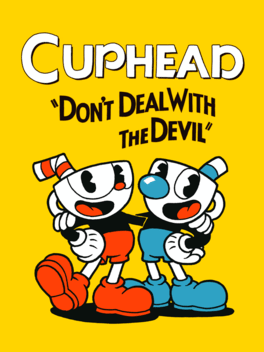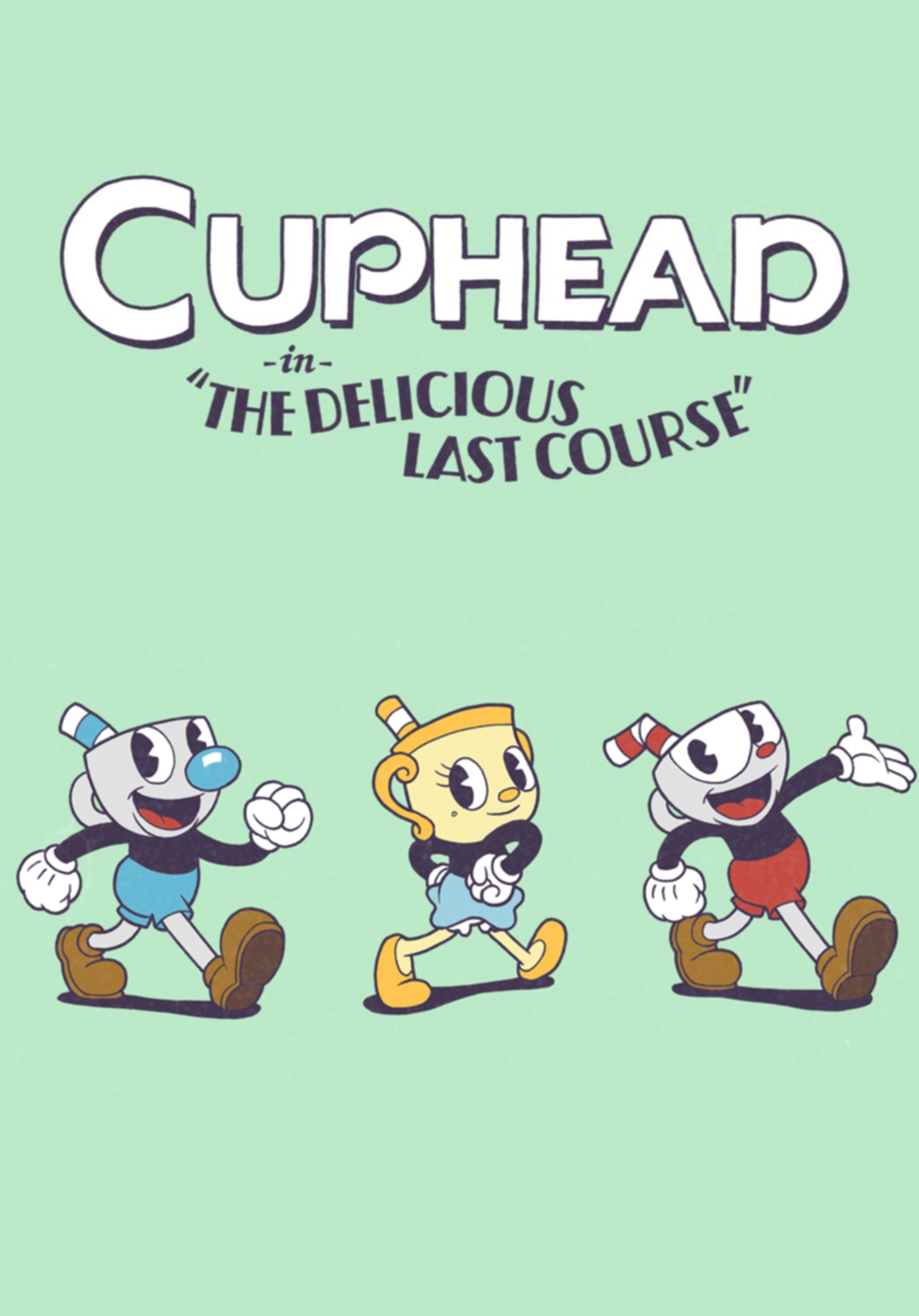(Originally published to Glitchwave on 8/19/2020)
[Image from igdb.com]
Cuphead
Developer: Studio MDHR
Publisher: Studio MDHR
Genre(s): Run and Gun
Platforms: PC, Xbox One, Switch, PS4
Release Date: September 29, 2017
Calling Cuphead a "retro game" to describe its general direction has become one of my favorite awkward fallacies. It's not a retro game in the same vein as Shovel Knight or Bloodstained, but a modern indie game that calls back to the long-forgotten retro animation style similar to early Walt Disney and Max Fleischer cartoons. The developers did a fantastic job at ensuring the game fit the aesthetic and feel of a 1930s cartoon in every aspect. The soundtrack is a snappy mix of prevalent music genres popular during this era, such as Dixieland, ragtime, barbershop, and big band jazz. The game's animation is painstakingly hand-drawn, which probably caused the enormous span of development hell for so many years. The plot also seems like something from a cartoon from the 1930s. Cuphead and Mugman are denizens in this folksy cartoony world of Inkwell Isle when they disobey their old guardian, Elder Kettle, and decide to have some fun in a casino across town. They gamble against the Devil and lose, so they bargain with the Devil to go across town and collect the souls from the other denizens of Inkwell Isle instead of spending an eternity in hell. If you've seen any cartoons from this era, you know that there is a disturbing abundance of cartoons in which charmingly cute characters inadvertently make mistakes that condemn them to eternal damnation, so I think the developers did an outstanding job with the plot direction akin to the cartoons at the time (and also at displaying how terrifyingly conservative the 1930s were).
One common prediction before Cuphead's release was that it would be a run-and-gun game like Contra or Metal Slug. It turns out that those predictions were only half correct. Cuphead's direction leans towards being a boss gauntlet with run-and-gun levels to occasionally deviate from boss fights. The hub world is divided into four levels, each becoming much more difficult as the game progresses. Each part of Inkwell Isle has two run-and-gun levels and about 5-6 bosses except for the final part, Inkwell Hell. The bosses are an assortment of characters ranging from vegetables, frogs, birds, robots, mermaids, etc., all of which fit the 1930's cartoon aesthetic nicely. It's hard to say whether or not the subjective boss quality in this game is due to my range of difficulty with all of them. Do I like Captain Brineybeard and Werner Werman because of their design and fun, balanced fight, or were they substantially more manageable than the other bosses on Inkwell Isle III? Either or, I generally like all of them except for Wally Warbles. It's just something about his resting bitch face that makes dying to him much more aggravating. The run-and-gun levels tend to be just as difficult as the bosses. They take you out of the normal swing of things, but they don't quite match up in quality to the bosses.
Oh yes, I'd be remiss if I didn't mention that Cuphead is notorious for its "Dark Souls" difficulty level. I should slap myself for unearthing that old joke three years later, but that's how people saw it when it came out. It's pretty evident that the Dark Souls comparisons are silly, but it doesn't mean that Cuphead isn't a challenging game. The only aspect of Cuphead that it shares with retro games is its unforgiving difficulty level. In each level, Cuphead has only three chances to get hit before he dies. There is no such thing as health recovery in this game, and once you die, you have to restart the boss/level at the very beginning. Cuphead doesn't believe in modern luxuries like checkpoints or health bars. This aspect forces you to learn the boss's patterns and find a weapon combination that works for you (dare I say, Dark Souls?). At this point, I've 100% completed Cuphead twice, so I can safely say that I know how to get around the challenging obstacles that the game presents. Besides learning the bosses through trial and error, you must find a build that works for you. I've found the most luck with the roundabout and charge shot combo, using the spread shot occasionally depending on the boss (Beppi the Clown, Werner Werman, and the Devil go down so easily with the spread). The plane bosses are a different story, however, as you are limited to bullets and bombs. Each weapon works well depending on the boss phase, but the plane bosses are more a factor in dodging a myriad of obstacles and practicing the shrinking move to do so.
There is also a co-op mode where you can play through the entire game with another person playing as Mugman (or as Cuphead since the update a year ago). I played through the game for the first time with my brother playing as Mugman, and I do not recommend this to anyone playing Cuphead for the first time. Co-op adds a whole level of difficulty to the game that could be avoided entirely. I'm relatively certain that each boss's difficulty gets up-scaled like in Dark Souls, and saving your partner every so often can completely throw off your momentum. Play co-op after your first playthrough, or be prepared to have your friendships compromised.
Cuphead was a pleasant surprise back in 2017. For one, it was surprising that the game had so much to offer besides its pristine 1930s animation style that grabbed us many years before the game came out. It's a charming experience, and its notorious level of difficulty just makes it all the more invigorating. At this point, after completing the game twice, I feel as if I'm not finished with it yet. I'm looking forward to the DLC that's coming out so I can persevere through another wide-eyed, Mickey Mouse-looking boss once more.
(Originally published to Glitchwave on 7/21/2022)
[Image from igdb.com]
Cuphead: The Delicious Last Course
Category: DLC
Release Date: June 30, 2022
Ms. Chalice, a minor character in the base game, seems to be the biggest focal point of the DLC. Cuphead and Mugman are escorted to the fourth isle of Inkwell via a Charon-esque boatman to procure a body for the incorporeal Ms. Chalice to inhabit. A chef on this isle named Saltbaker claims that he can create a body for Ms. Chalice, but only if the porcelain duo retrieve the ingredients by defeating every boss in the isle. A new charm allows the player to play as Ms. Chalice, and she isn’t just a female Cuphead like Mugman is his Luigi. Ms. Chalice can use every weapon the boys can, but she comes with a few quirks of her own. For one, parrying as Ms. Chalice involves dashing into a parryable object instead of simply jumping. Ms. Chalice possesses two new super arts which include a heart that allows her to take a hit of damage like Aku Aku and one where a goddess charges an army of spirits. Her energy beam super art will be more familiar, but it blasts vertically instead of horizontally. Naturally, the charm used to play as Ms. Chalice connotes that any charm formally equipped will be voided, but she can still execute an invisible dash by rolling. Additional perks also include a double jump and four heart points instead of three. Normally, I’d treat Ms. Chalice’s inclusion in Cuphead with stark cynicism and claim that she’s an attempt to cater to the more “casual sensibilities” of girls, but Ms. Chalice is different enough to where a new learning curve is needed to play as her for veteran players like myself.
If the player doesn’t feel comfortable acclimating to the quirks of a new character, the DLC offers plenty for both Cuphead and Mugman. Porkrind’s store is restocked with a smattering of new shots and charms for the boys to have a whack at. Converge is a three-way electric bolt, Twist-Up is like the Spread with less of a solid trajectory, and the Crackshot is like a more powerful version of the Chaser. Out of all of these, the only one I found useful was the Crackshot and have placed it amongst my key shots in my Cuphead repertoire. The most useful new charm is definitely the heart ring which can replenish the player’s HP after successfully parrying a certain amount of times. I mainly stuck with what I was already familiar with, but it’s admirable that the developers included more of these features for the player to experiment with while not deviating too far from familiarity.
Being apprehensive to experiment with the DLC’s new features was not due to being a creature of habit. As proficient as I am with Cuphead now, I cannot forget how this game put me through the gauntlet of pain and suffering upon my first playthrough. I had a feeling that considering Cuphead’s bread and butter are boss battles that the developers would craft some of the game’s most daunting boss fights that make most of the bosses from the base game seem like a cakewalk. Six boss battles await the player on Inkwell Isle IV, and each of them are formidable foes that encompass the full extent of Cuphead’s gameplay. Like the bosses in the base game, each offers a unique theming. Moonshine Mob is a prohibition-themed fight against a recycled, unused spider model and his voguish gang of insects. Mortimer Freeze will shift his frigid form to a snowman, fridge, and a snowflake. Rootin-tootin cowgirl (emphasis on cow) Esther Winchester is the sole biplane battle in the DLC while The Howling Aces uses the theme of dogfighting (emphasis on dog) as an aerial background. Besides the inherent unfamiliarity, the core aspect that makes these bosses more difficult is how amplified the bullet-hell aspects of Cuphead are here. The screens of most of these bosses are more congested than the streets of LA and the player will feel as if they will need the peripheral vision of a fly to see everything zooming around them. Each boss clutters the screen with hazardous objects, but the worst offenders are Glumstone the Giant and Saltbaker once he reveals his insidious intentions with Ms. Chalice’s spirit.
Cranking up the busyness of each boss seems too easy to implement for a simple difficulty increase, but the DLC offers more than this. A ladder descends from the sky on Isle IV to carry Cuphead and Mugman up to a royal-themed mini-boss gauntlet similar to King Dice’s casino-themed cronies. The gimmick with all of these bosses is that the player can only harm them through parrying. Each of these five bosses are as unique to one another as all of the main bosses in the DLC and do not have to be defeated sequentially without dying with King Dice. Defeating these bosses also nets the player some coins to purchase the new items. For some reason, all of the content outside of the five main bosses reminded me of the Chalice Dungeons from Bloodborne in that their hidden location and optional precedence upheld more intrigue to the DLC.
There is a part of me that feels as if we waited too long for more of Cuphead just to receive some paltry DLC, but then that statement feels a bit ungrateful. The developers evidently worked as hard and as diligently on the DLC as they did on the base game, and this shows through the overall quality of the bosses and extra content that is totally unique from the base game. Cuphead’s narrative and gameplay was not open-ended enough to add onto it, but the extra content served a purpose in satiating my hunger for more of this unparalleled gaming experience. I needed to be humbled by Cuphead again after feeling as if I had mastered it after all these years.





No comments:
Post a Comment